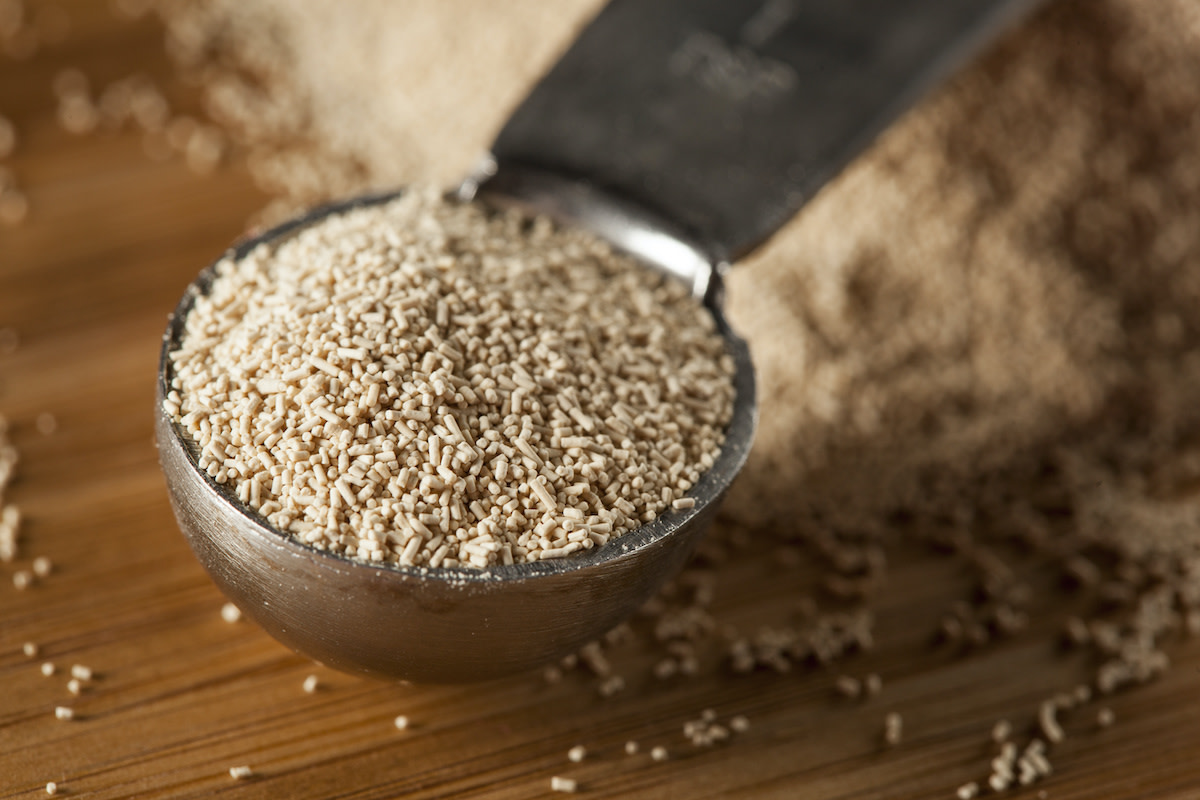Baking Powder vs. Yeast: How the Two Baking Agents Compare
Written by MasterClass
Last updated: Dec 20, 2021 • 3 min read
Whether you want to make sandwich bread or banana bread, knowing the difference between baking powder vs. yeast is crucial to the success of both.
Learn From the Best
What Is Baking Powder?
Baking powder is a chemical leavening agent that you include with the dry ingredients in baked goods. It’s a mixture of a weak acid, carbonate, and bicarbonate—a chemical compound that releases carbon dioxide gas into batter, such as for quick breads, cookies, and cakes. Baking powder is an acid-base reaction, which causes gas bubbles to expand and leaven the batter, making it rise. The result is a finished product that is light and airy.
What Is Yeast?
Yeast is a single-cell microorganism from the species Saccharomyces cerevisiae. As a leavening agent in bread recipes, yeast ferments, converting carbohydrates into carbon dioxide and alcohols through the fermentation process. As gas forms, it creates air bubbles that cause the dough to expand and rise. This same chemical reaction is part of the process for making alcoholic drinks like beer and wine.
Baking Powder vs. Yeast: 5 Differences
The differences between baking powder and yeast are plentiful, and listed below are just a few of the key differences between the two:
- 1. Possible substitutions: You can substitute one type of yeast for another type of yeast as long as you adjust the ratios in the recipe since they might react differently. For example, active dry yeast, fresh yeast, and a sourdough starter all require different processes. There are a few substitutes for baking powder, including buttermilk; a 2:1 mixture of cream of tartar and baking soda (sodium bicarbonate); and a mixture of lemon juice and baking soda. You cannot substitute yeast and baking powder for each other.
- 2. Reaction time: Baking powder activates almost immediately when you mix it with a liquid and continues to expand during the baking process. This means that adding baking powder to wet ingredients too early can lead to less leavening power while your food is in the oven, resulting in a flatter, denser finished product. In contrast, you require more time to activate yeast, which reacts slowly; this enables bread to rise for hours and then rise further in the oven during the baking process.
- 3. Taste and smell: Dry yeast lacks a taste, but blooming yeast smells similar to fresh baked bread. On the other hand, fresh yeast has a distinct taste and smell that dissipates during the fermentation process. Baking powder has a fairly neutral flavor because it is an acid base; however, if you use too much, the final product could taste acrid, similar to the flavor of baking soda, which is another chemical leavening agent.
- 4. Uses: You should use yeast for baking bread, making pizza dough, and crafting sweet rolls like cinnamon rolls or other sweet buns. These baked items benefit from the fermentation process yeast undergoes during the proofing process. By comparison, you should use baking powder for baked goods that won’t benefit from the taste of fermentation, such as banana bread, cookies, and cakes.
- 5. Varieties available: There are a few different yeast options: active dry yeast, instant yeast, bread machine yeast, and fresh yeast. Most baking recipes call for active dry yeast, but professional bakeries utilize fresh yeast. Baking powder encompasses two types: single-acting and double-acting. Single-acting baking powder releases carbon dioxide gas at room temperature, while double-acting baking powder produces carbon dioxide when you mix it with liquid, then releases even more in the oven.
Want to Learn More About Baking?
Become a better baker with the MasterClass Annual Membership. Gain access to exclusive video lessons taught by the world’s best, including Joanne Chang, Dominique Ansel, Gordon Ramsay, Chef Thomas Keller, Mashama Bailey, and more.
